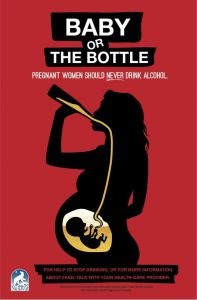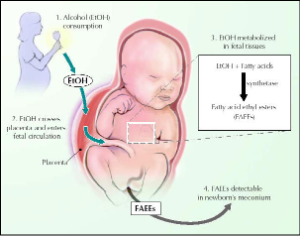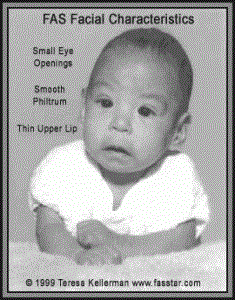By Renée D. Roberts, MPH, Caribbean Women's Health Association

What is FASD?
Fetal Alcohol Spectrum Disorders (FASD) is a common and preventable range of negative outcomes associated with prenatal ethyl-alcohol exposure. However, FASD is not intended for use as a clinical diagnosis, but is rather an umbrella term used to describe a heterogeneous set of permanent birth defects: Fetal Alcohol Syndrome (FAS), Alcohol-Related Neurodevelopmental Disorder (ARND), and Alcohol-Related Birth Defects (ARBD) that can occur in an individual whose mother consumed alcohol during pregnancy.
FASD can affect an individual in different ways, and can range from mild to severe; the conditions may include physical, mental, behavioral, and/or learning disabilities, which can lead to lifelong implications, as well as the risk of developing secondary disabilities, including drug and alcohol addictions. Furthermore, FASD is the leading cause of mental retardation in the United States surpassing Down's syndrome and Spina Bifida, and is the only one of the three that is preventable and costs the U.S. healthcare system on an annual basis more than $6 billion.
Cause and Prevention

There is no safe time, no safe amount, or no safe type of alcohol (including wine) to drink while pregnant. Nevertheless, the Centers for Disease Control and Prevention (CDC) reports that 1 in 13 pregnant women report alcohol use (at least one drink of any alcoholic beverage in the past 30 days), and the highest estimates of reported alcohol use were among those who were: aged 35-44 years old (14.3%), white (8.3%), college graduates (10.0%), and employed (9.6%).
While there are few estimates for the full range of FASD, western estimates suggest that FASD affects 1% of the population, and its frequency is much higher in some communities. In addition, FASD remains one of the most tragic outcomes of a woman's addiction or consumption of alcohol during her pregnancy due to its negative effects on the unborn child. FASD are caused when alcohol in the mother's blood passes to the baby through the umbilical cord.
Although, nearly half of pregnancies are unplanned in the U.S. and a woman can be pregnant and not know for up to 4 to 6 weeks, as well as ethyl alcohol is a teratogen (an agent or factor that causes malformation of an embryo) that has been shown to disrupt growth patterns and developments, it is never too late to stop drinking alcoholic beverage since brain growth takes place throughout pregnancy.
Nonetheless, to prevent FASD, a woman should not consume alcoholic beverages while pregnant, and the sooner a woman stops drinking alcohol prenatally, the safer it will be for her and her baby.
Figure 1. Neonatal Meconium assay for fatty acid ethyl esters FAEES)
Diagnosis
FASD is not meant for use as a clinical diagnosis. However, diagnosing the types of FASD can be difficult. Unlike a blood test, there is no medical test to check for FASD. Moreover, due to similar symptoms shared between FAS, the most common FASD diagnose and other disorders, such as ADHD (attention-deficit/hyperactivity disorder) and Williams syndrome makes diagnosing more challenging.
In fact, FASD is known as a "hidden disability" because of its late diagnosis, which often occurs, if at all, during adolescence or adulthood. For example, a recent CDC study that analyzed medical and other records found that in 0.3 out of 1,000 children from 7 to 9 years of age had FAS. Similarly, another study using in-person assessment of school-aged children in several U.S. communities reported higher estimates — 6 to 9 out of 1,000 children with FAS.
Fig 2 : FAS Facial Characteristics.
Treatment
FASD are incurable. However, research shows that early intervention treatment services -- medication to help with some symptoms, behavior and education therapy, parent training, and other alternative approaches can improve a child's development. For instance, a clinician who sees a young child during a routine check-up can use the opportunity to identify whether that child has been exposed to prenatal ethyl-alcohol by asking a series of carefully framed questions concerning the mother's alcohol consumption during pregnancy.
Using such a caring and nonjudgmental approach, not only sensitizes the topic, but is also helps to narrow the diagnostic criteria by eliminating disorders with similar symptoms, such as ADHD; thus, leading to careful and accurate diagnosis and treatment of FASD.
In addition to early intervention treatment services, research found that "protective factors", such as early diagnosis (before 6 years of age), loving, nurturing, and stable and non-abusive household during the school years and involvement in special education and social services can help reduce the effects of FASD.




